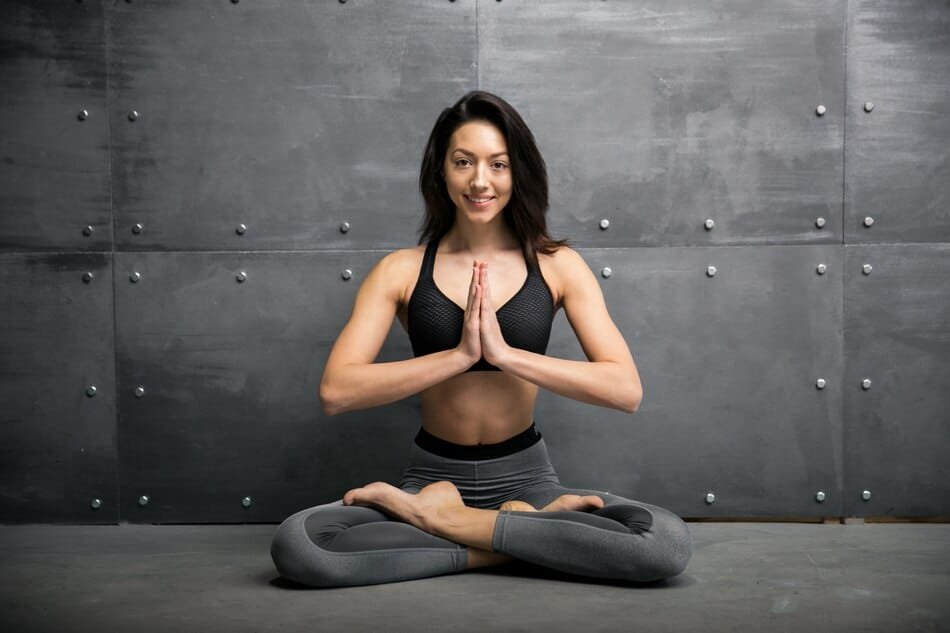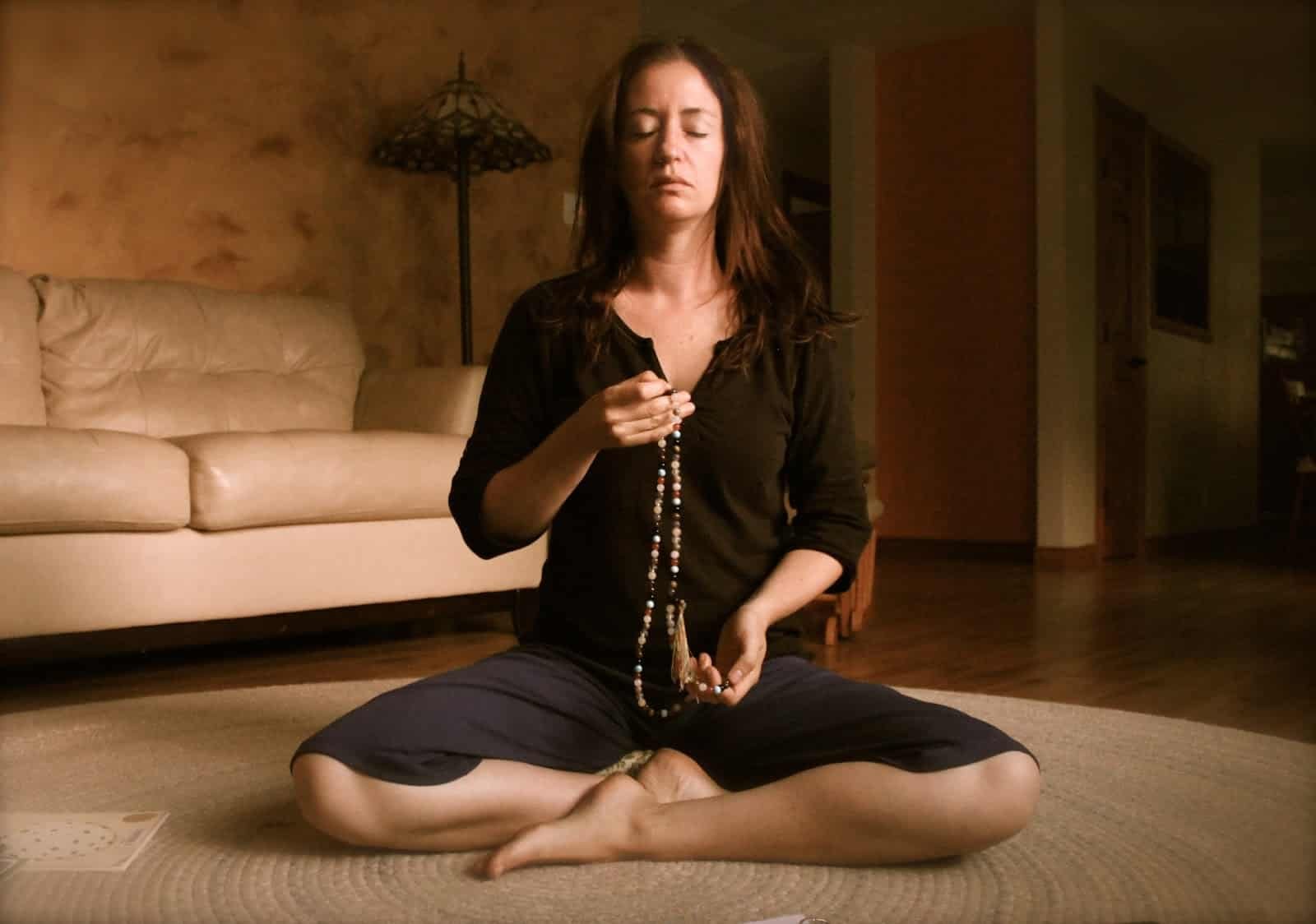We all want to find ways to relax when our lives are too busy. In the lotus pose, also known as Padmasana, you can spread out like a lotus flower. Cross your legs and slowly release your stress hormones to feel better. Asana (mountain pose) is a yoga pose that helps you feel good. So get on your mat and find a good spot.
Padmasana is the most meditative pose in yoga. The feet are on the thighs, and the legs are crossed. This is an old Indian yoga pose. This pose for meditation has been around for a long time and is used a lot in the Buddhist and Jain faiths.
When you do yoga in the lotus position, your mind, body, and spirit are all linked. You study how to breathe correctly and deeply, which keeps your body stable. A lotus flower is a sign that doesn’t depend on religion or time. It stands for fresh starts, innocence, power, spirituality, and waking up.
Siddhartha Gautama is the founder of Buddhism, and Tirthankara is the founder of Jainism. They all meditated in the lotus position.
What is Padmasana Yoga Lotus Pose?
This yoga pose, Padmasana, is also known as the sitting position or lotus pose. It helps people get into a deep state of meditation. The name Padmasana comes from Sanskrit. It’s also called Kamalasana. It’s also known as Vajrasana in some places and languages. Padmasana is a sitting pose where the legs are crossed over the heart. This place helps you keep your mind clear and calm.
6 Health Benefits Of Padmasana Yoga
It’s important to know what Padmasana is suitable for before learning how to do it. The pose can be done in many different ways. In Padmasana yoga, you feel better in your body and in your spirit.
Alleviates Mental Stress
Everyone knows Padmasana is a great way to calm your mind and body. The stretches loosen tight muscles, getting rid of the stress that has been building up.
The regular breathing pattern in this yoga pose clears our minds of evil thoughts and feelings and fills them with good energy. It also makes our bodies and minds feel better. Nothing calms the mind like taking a break from overthinking.
Improves Digestion
Padmasana is a yoga pose that gently rubs your stomach, which assists your body in breaking down food better. Besides that, it brings blood back to the stomach, which helps digestion and improves the digestive system. Some digestive problems, like diarrhea or constipation, can be helped by the lotus pose because it starts the digestive fire.
Reduces Muscular Tension
Many people say the lotus pose in yoga is the most relaxing because it stretches and lengthens your muscles to your core. This makes the muscles less tight by loosening them up. Adding this to the process brings down the pressure and keeps it at an average level.
Improves Circulation And Breathing
Your lungs get bigger as you do more Padmasana yoga, and you can hold your breath longer. You can get a lot of oxygen this way. A steady pattern of breathing in and out can help with this. When you breathe in oxygen, your blood moves quickly through the oxygen vessels. This makes your blood flow better. It’s also less likely that you’ll have a heart attack or stroke.
Restores Energy Level
Padmasana is great because it makes your metabolism go faster. Padmasana speeds up blood flow and allows good thoughts and energy in our bodies and minds. This gives us more power from the inside out.
It helps you stay awake.
The simple lotus pose, done while sitting with your legs twisted, can help you fight insomnia. Your steady breathing wakes you up and makes you feel better. The open hips also help you relax and sleep well without any problems.
Steps And Instructions For Performing Padmasana:
If you need help figuring out how to do Padmasana, don’t frown. We’re here to help you get healthy and happy by giving you a complete, detailed guide to the steps and process of Padmasana. You only need to follow a few simple steps to get into Padmasana. But be careful because it’s essential to get the posture right. Let us show you how to do padmasana.
- Step 1: To begin, sit on the floor with your legs straight before you.
- Step 2: Now, curve your knees slightly and make a cradle shape with your lower leg. Use your hands to put the leg on the left thigh gently. Do the same thing with your other leg slowly now.
- Step 3: Make sure the feet are flat on the ground, and the heels are close to the waist. Keep your hands close together as you fold the leg.
- Step 4: Your legs should now be in the same place. Move on to the next step. Pick a hand gesture to do. To make the namaskar mudra, you can either put it on your knees or clasp it close to your chest.
- Step 5: While you’re in this position, keep your back and head straight.
- Step 6: Stay in the pose for a few minutes while you take a deep breath. Then, let out a breath. Pay attention to both how you breathe and how your body moves.
Follow the same steps with the other leg. These are the steps you need to follow to do padmasana yoga. You can try different changes and variations once you’re good at the pose.
If you want to get even more out of Padmasana, use mudras. The energy in your body flows when you use different mudras. This pose and Padmasana work together to strengthen the benefits and energy flow. To get the most out of the benefits of Padmasana, you should do it with certain hand gestures.
4 Ways To Begin Padmasana As A Beginner’s Tip
The steps for padmasana might sound easy, but they’re not dull. Need help figuring out where to start? Here are some tips and tricks.
- Hold the cradling pose and press the inside of your foot against the top of your arm. This will keep your ankles from crossing over too far. This tip is for people who are just starting or who are pregnant and want to keep their ankles from getting too stressed.
- Ensure that the ankles inside and outside are stretched the same amount. Putting your foot close to the other groin would help. It might be simple for new balancers to stay on their feet.
- Pay attention to how you breathe as you take deep breaths in and out. This is important before you start meditating or focusing to help you improve.
- At first, it would be best to trust your yoga teachers to look out for your health and safety.
Conclusion
It’s called “the lotus pose” because of how the feet and body look. As the lotus flower grows from mud and stands for power and light, so should you. Stay grounded and plant your roots deep, even when hectic and loud. Putting down roots and keeping life in balance is very important.

Ruby
Ruby is a certified fitness coach and trainer dedicated to helping individuals achieve their health and fitness goals. Specializing in personalized workout plans, Ruby provides expert guidance and motivation to clients of all fitness levels. Her energetic and supportive approach ensures effective, safe, and enjoyable training experiences.







